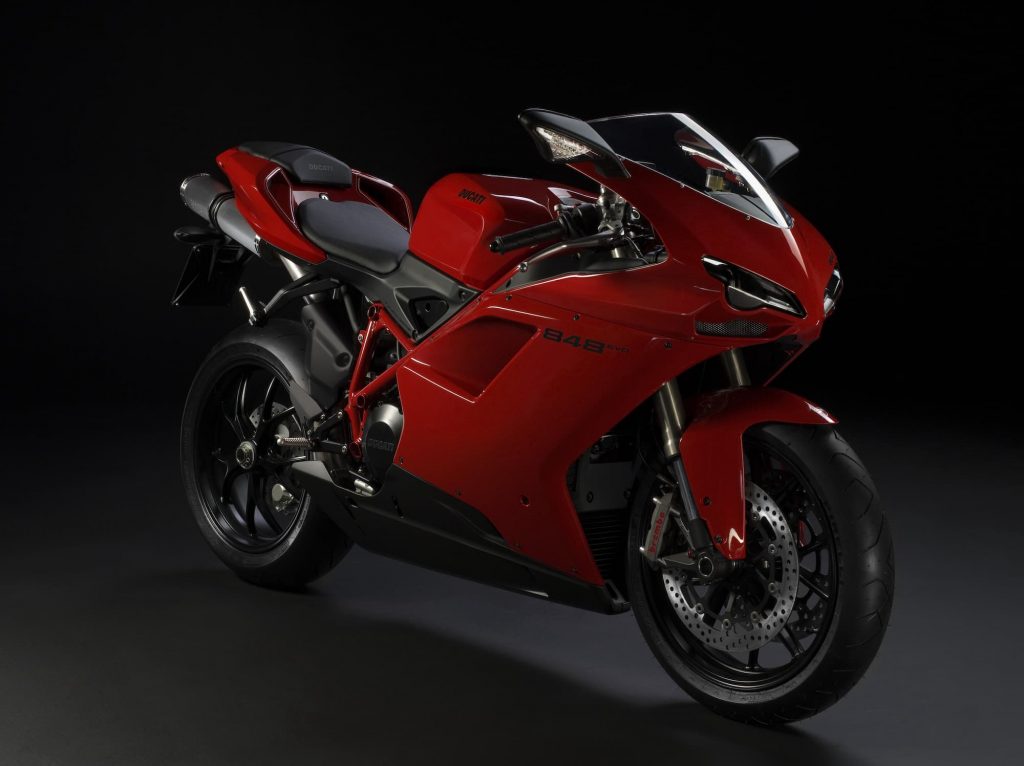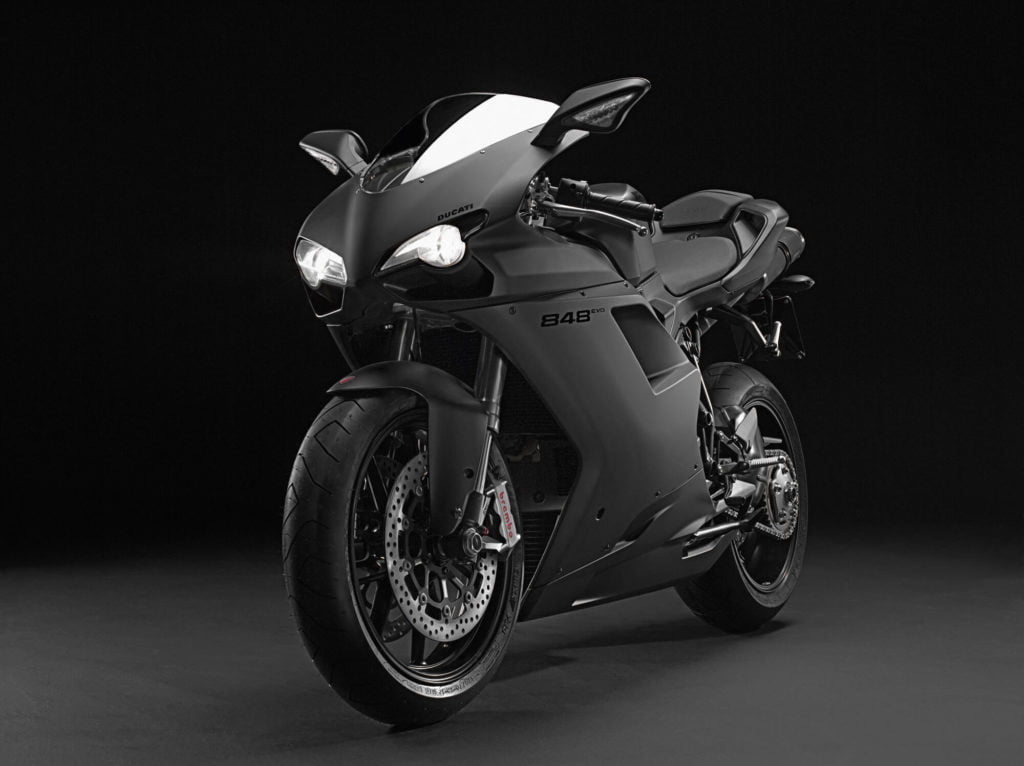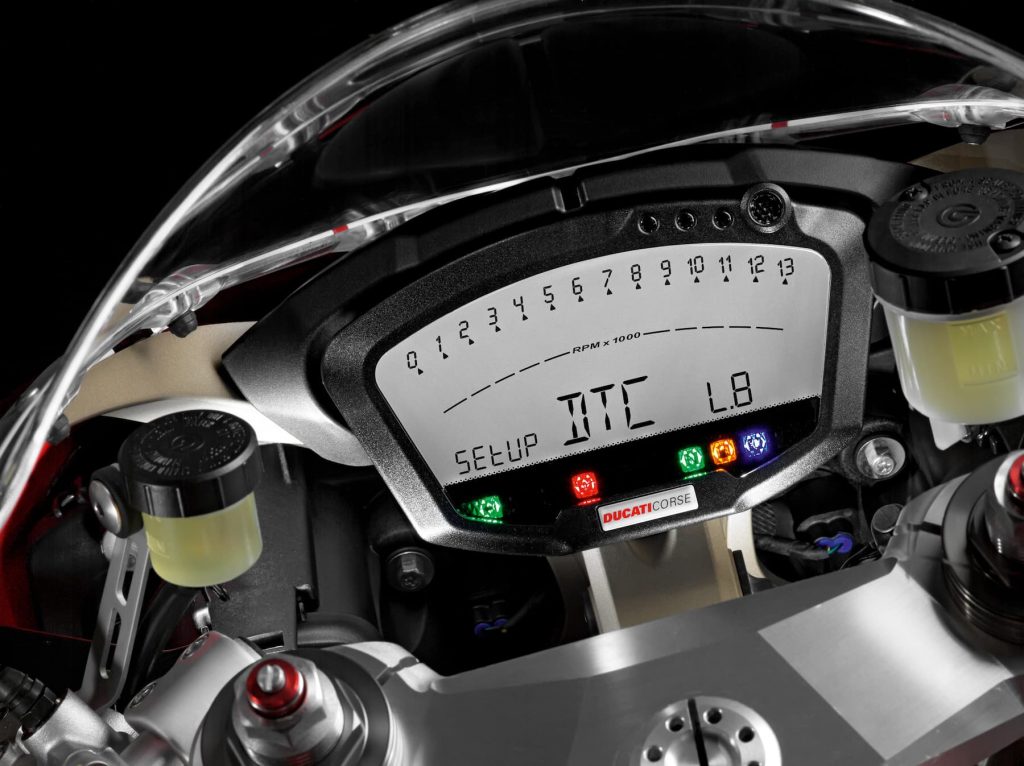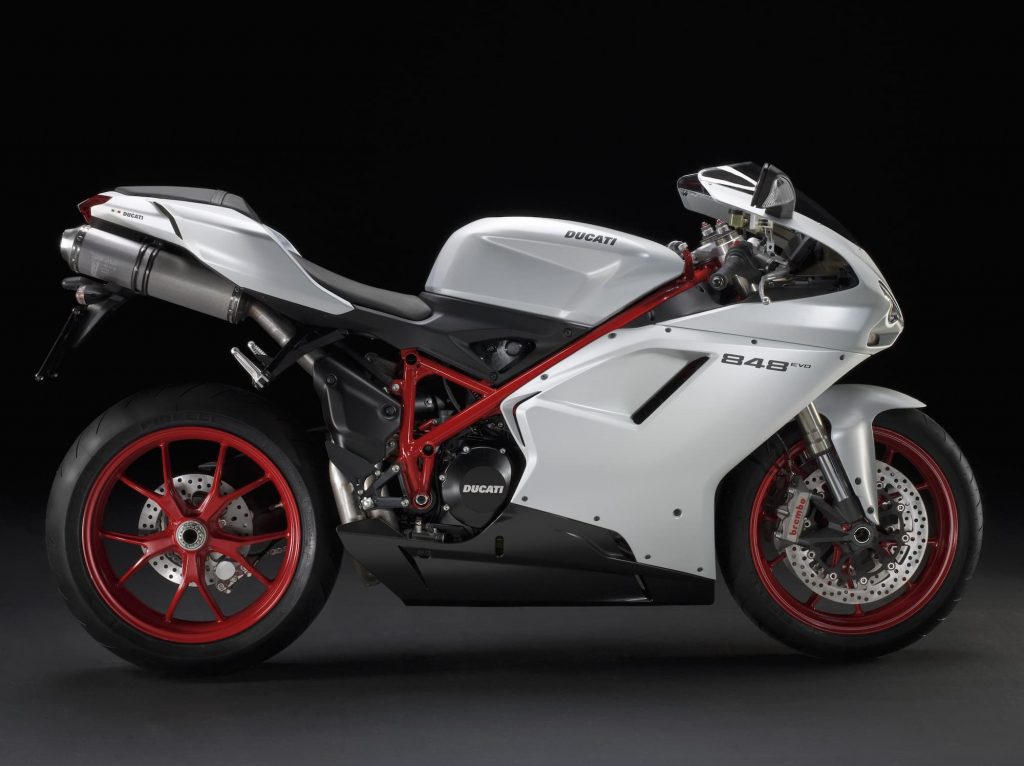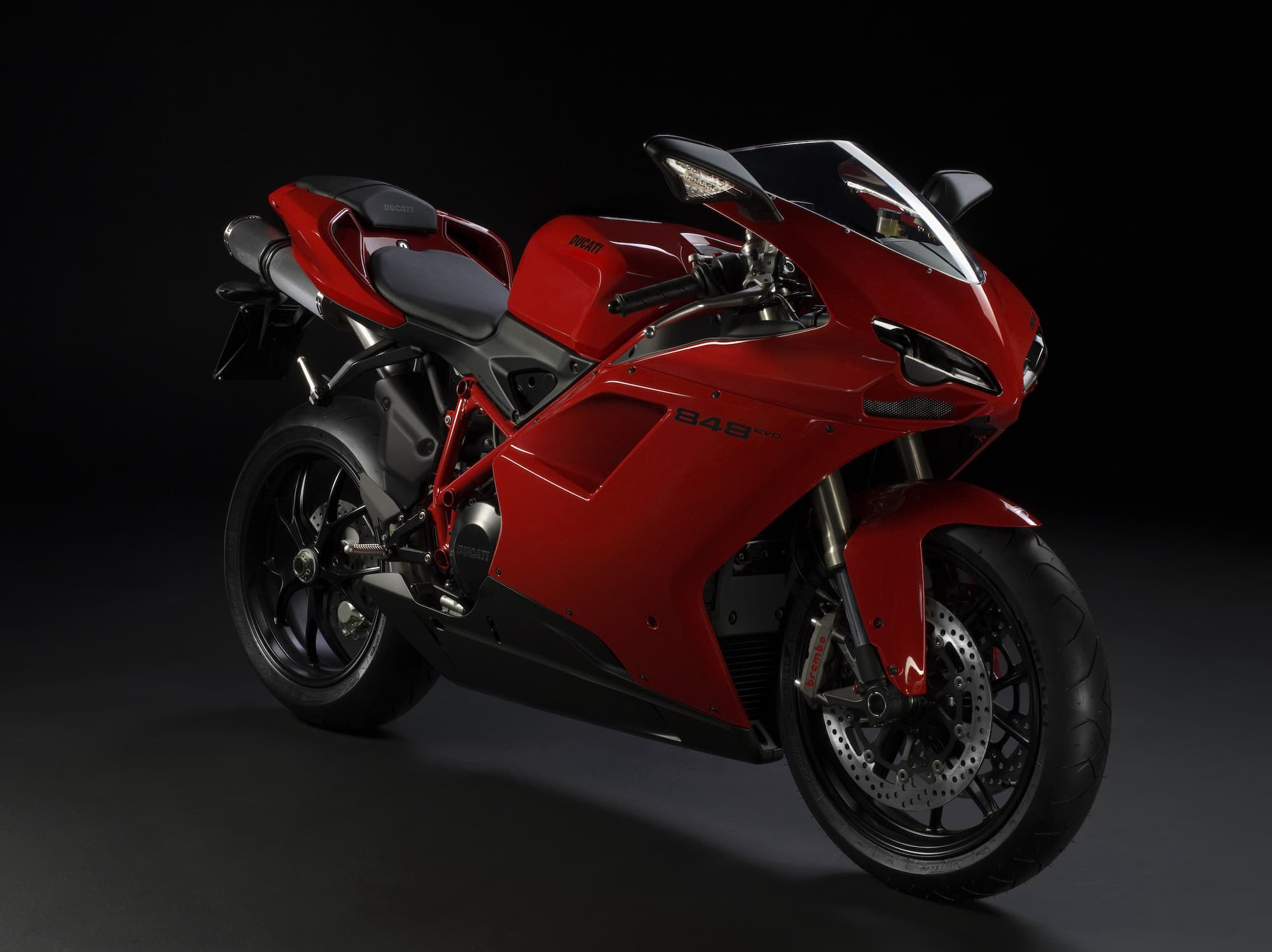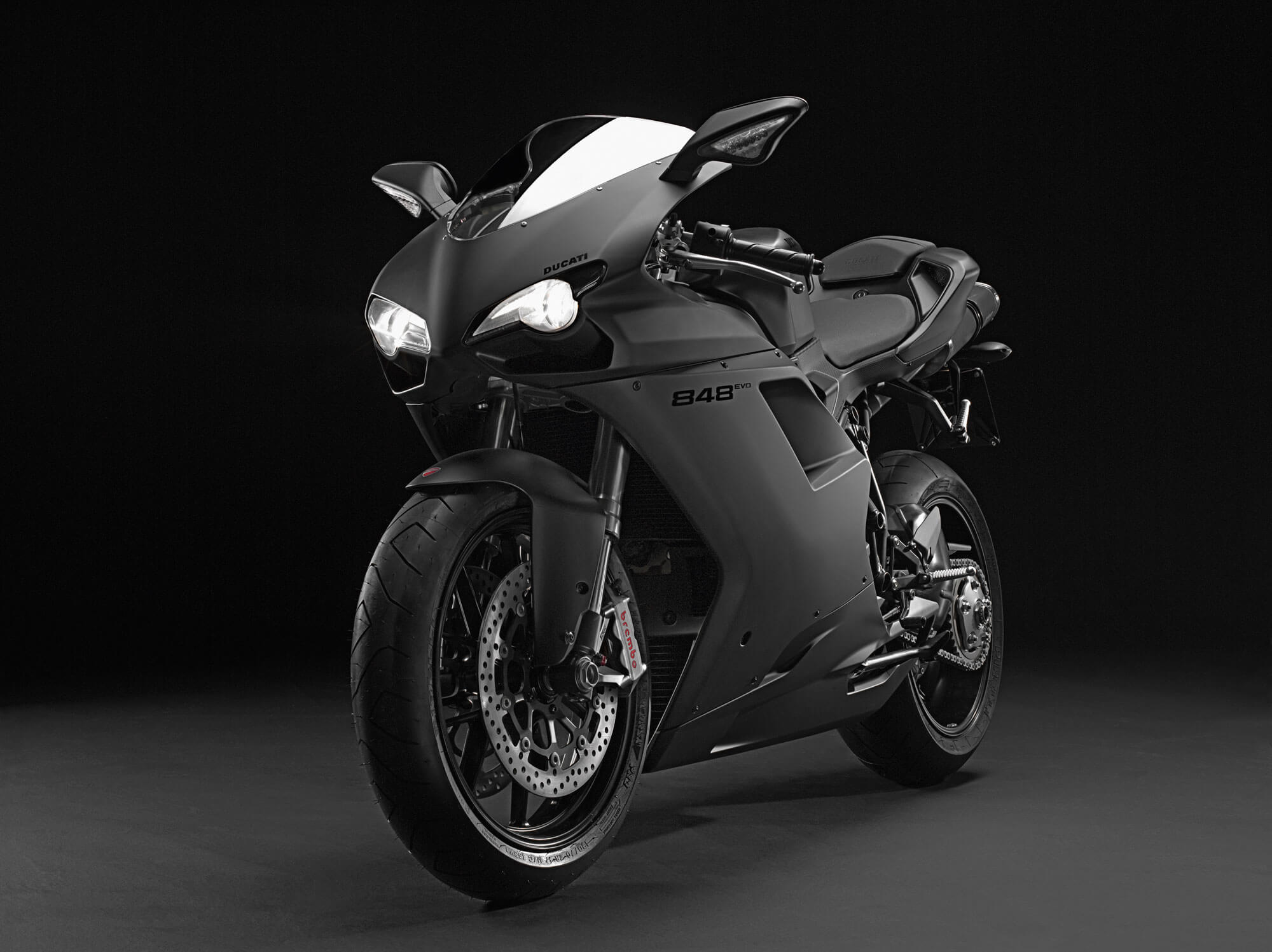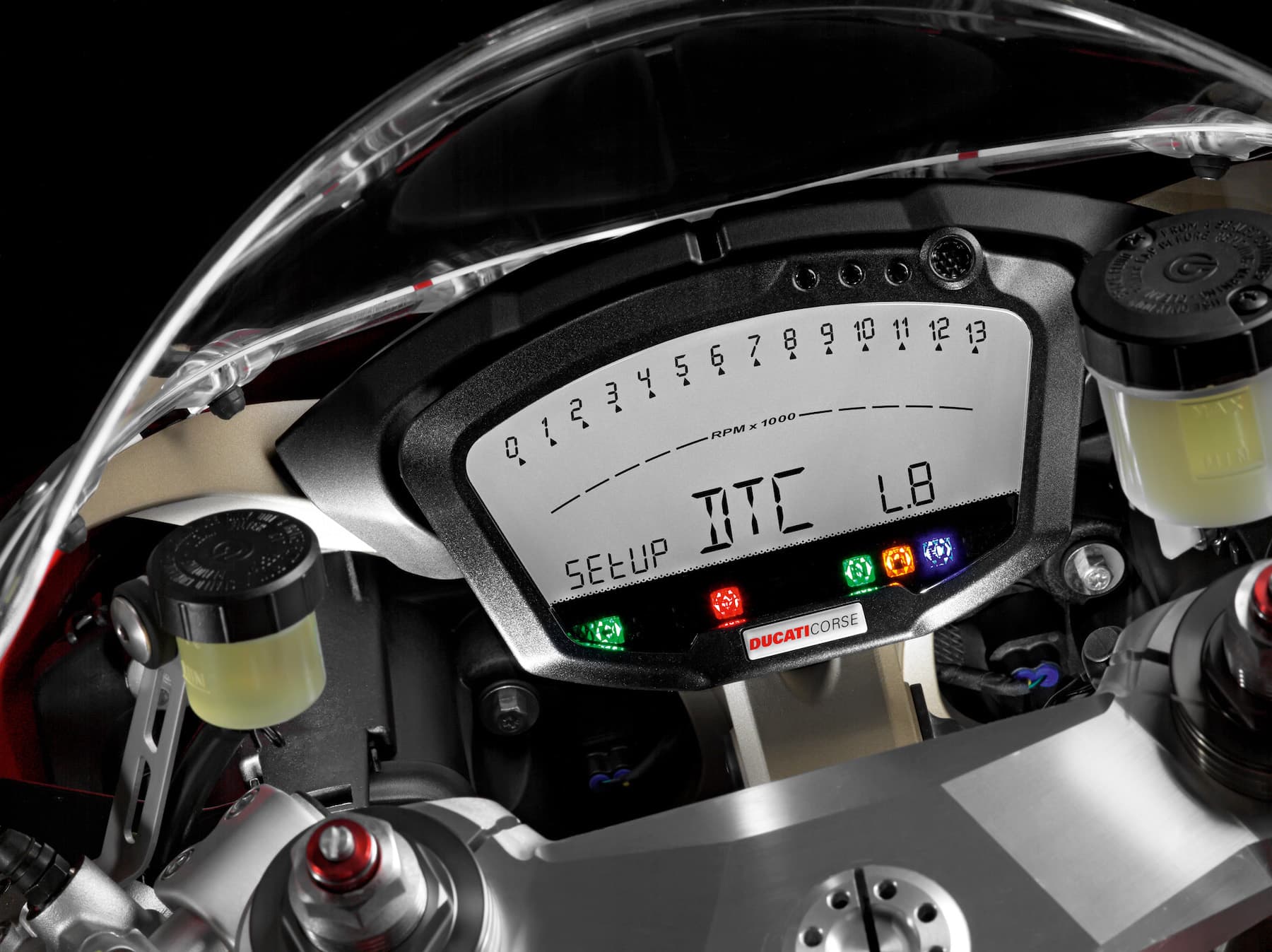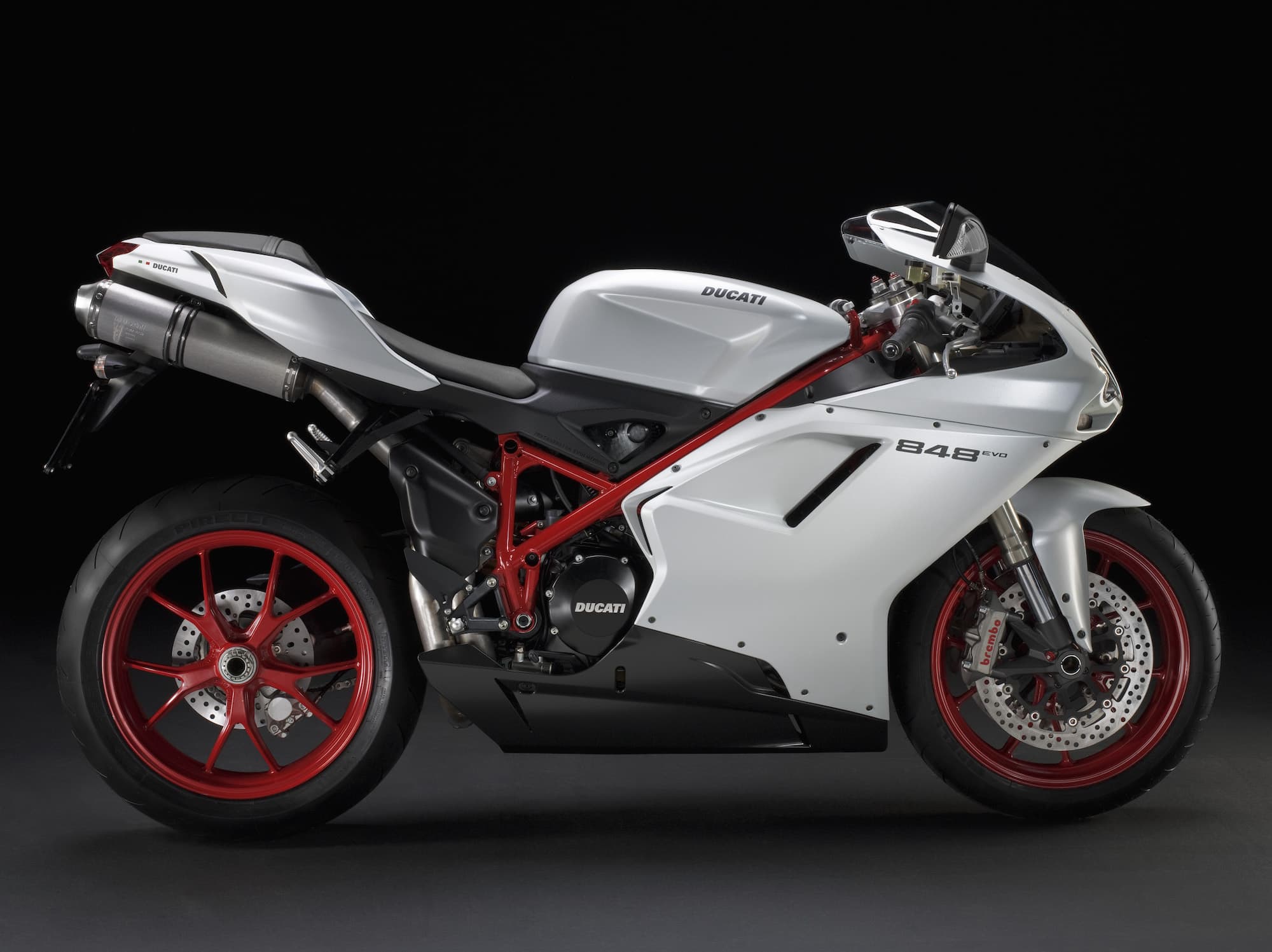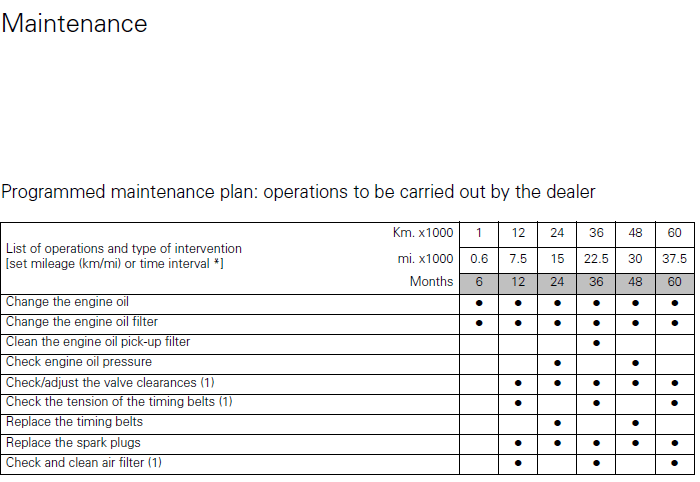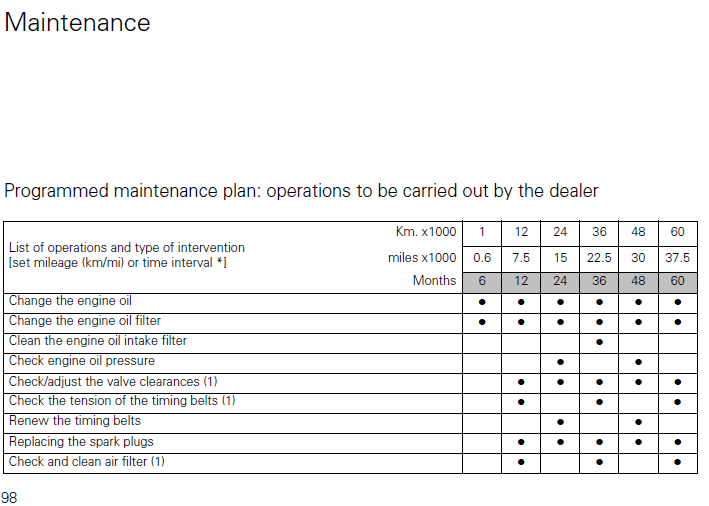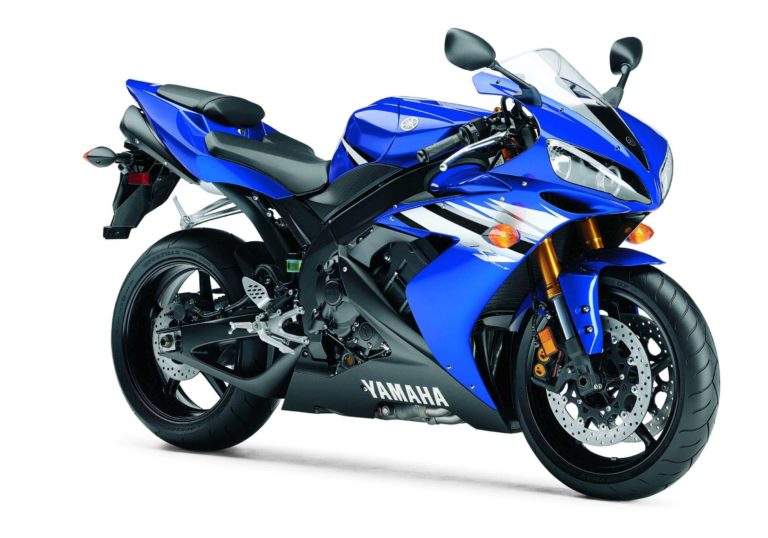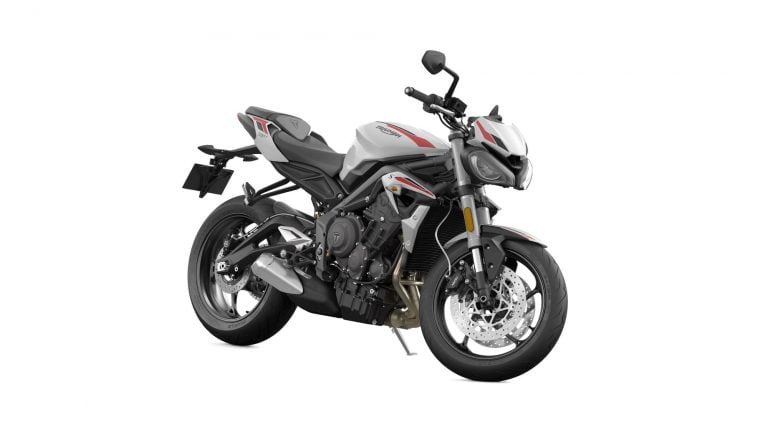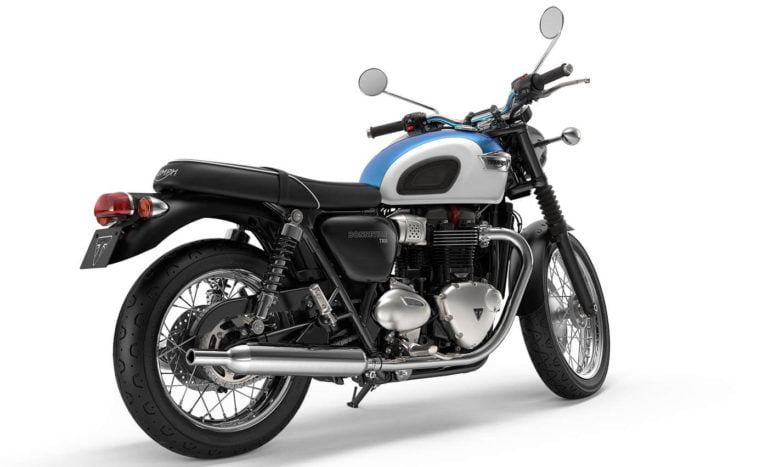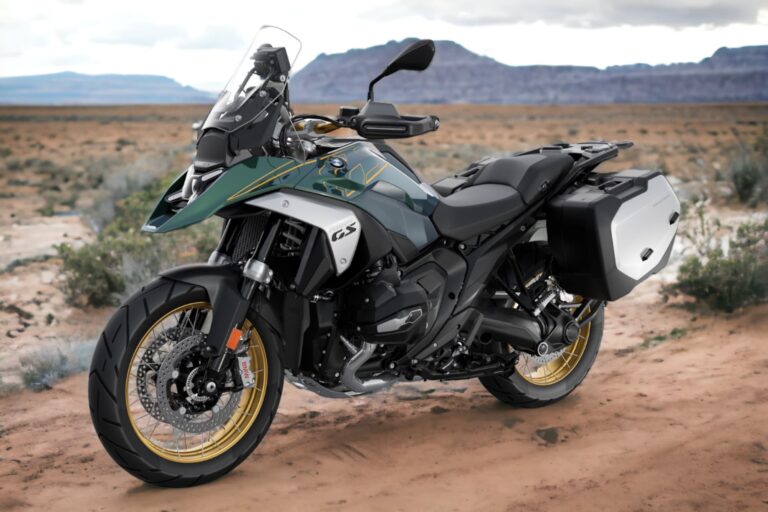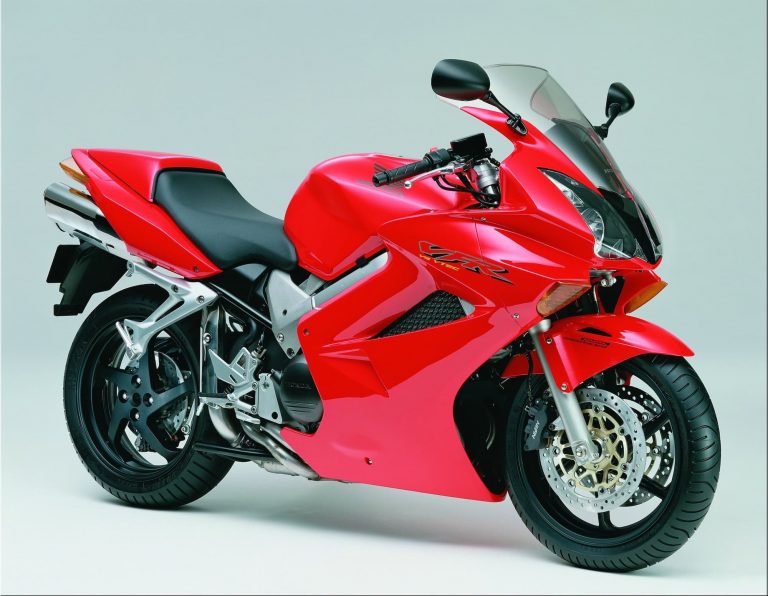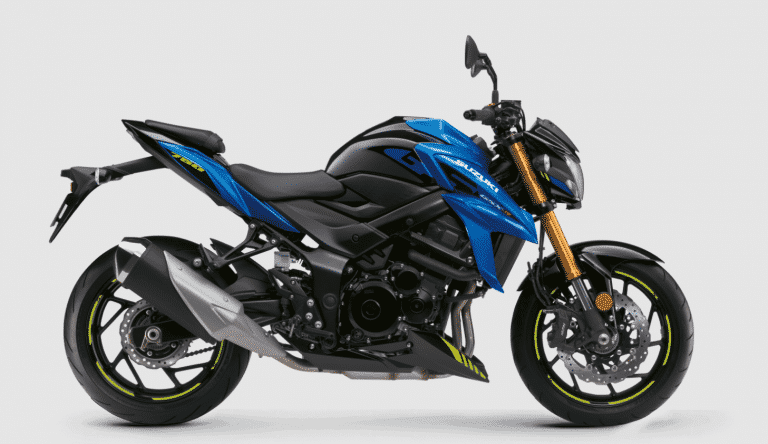Ducati 848 EVO (2010-2013) Maintenance Schedule
This is the Ducati 848 EVO maintenance schedule — sourced from the owner’s manual, with references to parts diagrams. The 848 EVO is a higher-spec evolution of the original Ducati 848.
The Ducati 848 is the “mini superbike” made between 2008 and 2013. It was originally the little sibling to the Ducati 1098 Superbike. The 848 evolved to the 848 EVO roughly in time with the release of the Ducati 1198 Superbike and came with a host of improvements — though the basic engine capacity and motorcycle design stayed the same.
The Ducati 848 was released in a number of trims, primarily including the EVO and EVO Corse. Here are their maintenance schedules:
- Ducati 848 Superbike (2008-2013) maintenance schedule
- Ducati 848 EVO (2010-2013) maintenance schedule — Higher power engine, radial brake calipers
- Ducati 848 EVO Corse (2012-2013) maintenance schedule — Full Öhlins suspension, bigger brake rotor
The Ducati 848 Superbikes are all based on the same engine, though in different states of tune for the EVO models. They all have an 849cc 8-valve liquid-cooled 90-degree L-twin. In the Ducati 848 EVO trim, the engine makes a claimed 103 kW / 140 CV / 138 bhp at 10500 rpm.
The Ducati 848 EVO stayed in production until 2012 alongside the EVO Corse, and was eventually replaced by the Ducati 899 Panigale from 2013.
This post was originally published on 11 October 2021, but has since been significantly improved and updated.
This site has links for things like oil and spark plugs from which we earn a commission (which unfortunately nobody can save, not even us). If you appreciate this work, then please use those links. Thanks!
Ducati 848 EVO Service Intervals
The Ducati 848 EVO Superbike, having a liquid-cooled L-twin engine with 4-valves per cylinder, shares similar service intervals with other Ducati superbikes of 7500 miles / 12000 km between oil changes, as well as valve service intervals.
You need to inspect the belt tension at the first service, and change the belt at the second. Both checking the belt tension and replacing the belt is every two services, alternating — see the schedule below.
The Ducati Superbikes also have liquid cooling, so the coolant needs to be replaced periodically. And as the clutch is hydraulic, replace the clutch fluid when you replace the brake fluid.
What you need to maintain the Ducati 848 EVO
The following is a list of consumables (things like oil, spark plugs etc.) you need to maintain the Ducati 848 EVO.
The EVO has some different components and these are reflected below.
| Part | Ducati 848 Spec |
|---|---|
| Oil | Ducati recommends Shell Advance Ultra motorcycle oil. You need 3.7L for a complete oil change. It’s hard to find and expensive so people suggest Mobil 1 Synthetic 10W-40. The 10W-40 spec is what Ducati recommends for the widest variety of operating temperatures.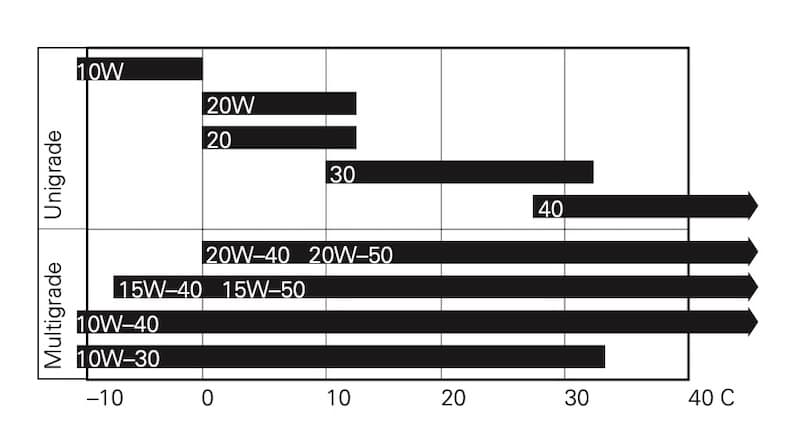 |
| Oil filter | Genuine Ducati part for the oil filter is 44440037A. You can also use a Hiflofiltro HF153RC oil filter which can be changed with a normal wrench. |
| Air filter | The Ducati part for the air filter is 42610201A. You can also use a DU-1007 from K&N. |
| Brake fluid, Clutch fluid | Ducati recommends Shell Advance DOT 4, but that’s quite hard to find, so Castrol DOT 4 Synthetic is a good and very high-quality alternative. |
| Coolant | Ducati recommends Shell Advance Coolant or a 35-40% mix of Glycoshell, a Nitrite, Amine, and Phosphate-free coolant. But any ethylene glycol-based coolant with corrosion inhibitors safe for aluminum radiators will do the job, and Pro Honda HP coolant is a popular choice. Those putting the Ducati 848 to race use prefer distilled water and Redline Water Wetter. |
| Timing belt | Is it time to change the timing belt? Don’t put it off… a broken timing belt will cost you a lot! You need part number 73740252A. |
| Front brake pads | The Ducati 848 EVO has radial-mount Brembo calipers, an update from the standard 848 superbike. OEM brake pads are part number 61340791A, EBC HH pads (more available, and highly regarded) are part number FA447HH. Sintered pads give more bite and feel, but are harder on the discs. |
| Rear brake pads | Original part number 61340381A, EBC part number FA266HH for more bite/feel. |
| Spark plugs | NGK code MAR10A-J. |
| Fork oil | Shell Advance Fork 7.5 or Shell Donax TA |
Regular maintenance for the Ducati 848 EVO
This is maintenance that you can do yourself. Every 600 miles/1000 kms OR 6 months:
- Lubricate the chain and check for play (use Motul Chain Paste or a full Motul chain care kit)
- Check brake wear levels
- Check oil level, top up with Mobil 1 Synthetic 10W-40 as necessary
- Check brake and clutch fluid, top up with Castrol DOT 4 if necessary
- Check radiator fluid, top up if necessary (with either a coolant that meets spec, like Pro Honda HP coolant, or distilled water + Redline Water Wetter)
- Check tire tread and depth
These are regular maintenance operations. The owner’s manual has instructions on how to do these operations.
Ducati 848 EVO Maintenance Schedule Table
Below is a list of maintenance operations for the Ducati 848 EVO
Notes on the maintenance schedule
- The Ducati 848 EVO’s service intervals are every 12,000 kms or 7,500 miles OR 12 months. At every any of these points, check the table to see what’s due.
- Follow the earlier of the time-based or distance-based interval, other than those items marked (1).
- For items marked (1), just follow the distance interval (ignore the time interval)
- The break-in service has been omitted as it has already been done.
| km x 1000 | 12 | 24 | 36 | 48 | 60 |
|---|---|---|---|---|---|
| miles x 1000 | 7.5 | 15 | 22.5 | 30 | 37.5 |
| Months | 12 | 24 | 36 | 48 | 60 |
| Change the engine oil (Mobil 1 Synthetic 10W-40) | X | X | X | X | X |
| Change the engine oil filter (HF153RC) | X | X | X | X | X |
| Clean the engine oil intake filter | X | ||||
| Check the engine oil pressure | X | X | |||
| Check/adjust the valve clearances (1) | X | X | X | X | X |
| Check the tension of the timing belts (1) | X | X | X | ||
| Renew the timing belts (part 73740252A) | X | X | |||
| Replace the spark plugs (NGK MAR10A-J) | X | X | X | X | X |
| Check and clean the air filter (1) | X | X | X | ||
| Change the air filter (DU-1007) | X | X | |||
| Check throttle body synchronisation and idle speed setting (1) | X | X | X | X | X |
| Check the brake fluid and clutch fluid levels | X | X | X | X | X |
| Change the clutch fluid and brake fluid (Castrol DOT 4) | X | ||||
| Check and adjust the brake and clutch control cables | X | X | X | X | X |
| Check/lubricate the throttle/choke cables | X | X | X | X | X |
| Check tyre pressure and wear | X | X | X | X | X |
| Check the brake pads. Renew if necessary | X | X | X | X | X |
| Check the steering head bearings | X | X | |||
| Check the drive chain tension, alignment and lubrication (Motul chain care kit) | X | X | X | X | X |
| Check the clutch disc pack. Renew if necessary (1) | X | X | X | X | X |
| Check the coolant level | X | X | X | X | X |
| Check the operation of electric fans and sealing of coolant circuit | X | X | X | X | X |
| Change the coolant (Pro Honda HP coolant, or Water Wetter + distilled water) | X | ||||
| Check the rear wheel cush drive | X | X | |||
| Check the wheel hub bearings | X | X | |||
| Check the indicators and lighting | X | X | X | X | X |
| Check tightness of nuts and bolts securing the engine to the frame | X | X | X | X | X |
| Check the sidestand, lubricate if necessary | X | X | X | X | X |
| Check tightness of the front wheel axle nut | X | X | X | X | X |
| Check tightness of the rear wheel axle nut | X | X | X | X | X |
| Check the external fuel hoses | X | X | X | X | X |
| Change the front fork oil (Shell Donax TA) | X | ||||
| Check the forks and rear shock absorber for oil leaks | X | X | X | X | X |
| Check the front sprocket retaining bolts | X | X | X | X | X |
| General lubrication and greasing | X | X | X | X | X |
| Check and recharge the battery | X | X | X | X | X |
| Road test the motorcycle | X | X | X | X | X |
| Perform general cleaning | X | X | X | X | X |
General Information on the Ducati 848 EVO
The Ducati 848 was the successor to the Ducati 749. It has an 849cc L-twin 4-valve-per-cylinder engine that’s liquid-cooled, a common feature on the superbikes.
The Ducati 848 EVO was an improvement again on the base model EVO. The headline improvements were a much stronger engine and improved brakes — and of course revised paint schemes. It looks sharp in the Dark colour scheme!
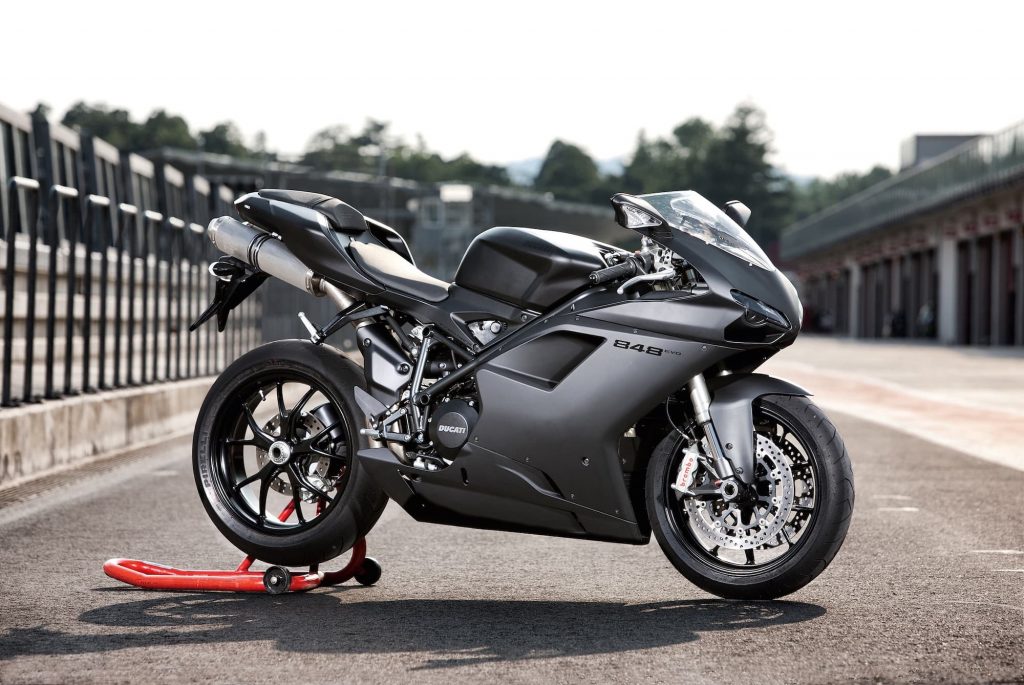
Things that distinguish the Ducati 848 (and EVO) from its immediate predecessor, the Ducati 749, are
- The single-sided swing-arm — regardless of whether it’s better or not, it’s a style upgrade
- Larger, more powerful engine than the 748cc engine in the 749
- Different looks, reverting to the same aesthetic as the Ducati 916 — Dual front headlights
Here’s how the models of Ducati 848 changed between the base model, EVO, and EVO Corse:
| Spec | 848 (base) | 848 EVO | 848 EVO Corse S.E. |
|---|---|---|---|
| Peak power | 92 kW / 125 CV / 123 bhp @ 10000 rpm | 103 kW / 140 CV / 138 bhp @ 10500 rpm (larger Marelli throttle bodies, revised cams, cylinder heads) | 103 kW / 140 CV / 138 bhp @10500 rpm |
| Compression ratio | 12.1:1 | 13.2:1 | 13.2:1 |
| Front brakes | 320mm discs, axial-mounted Brembo P4.32 calipers | 320 semi-floating discs, radial mounted Brembo M4.34 calipers | 330mm semi-floating discs, radial mounted Brembo M4.34 calipers |
| Front suspension | 43mm Showa forks, fully adjustable | 43mm Showa forks, fully adjustable | 43mm Öhlins fork, fully adjustable |
| Rear suspension | Monoshock, fully adjustable | Monoshock, fully adjustable | Öhlins monoshock, fully adjustable |
| Ride aids | – | Steering damper | Steering Damper, Traction Control, Quickshifter |
The EVO and EVO Corse had a significantly revised engine that Ducati claimed made 11 kW (15 hp or CV) more power at peak, though various reviewers’ dynamometers showed a less significant jump. Still, the EVO is a more desirable machine not just for the engine improvements but also for the better radial-mounted calipers.
Tech specs aside, the Ducati 848 EVO continued the “middleweight superbike” legacy of being a more affordable, less extreme version of its race spec bigger sibling, the Ducati 1198 Superbike.
The 848 EVO is well-regarded among people who don’t want the balls-to-the-wall power of the 1098 or 1198 superbikes. In EVO form it still produces a healthy amount of power — in fact, it’s more power than many superbikes of just 15-20 years prior, with peak torque coming on lower.
Combined with the fully adjustable suspension and very capable braking, the Ducati 848 EVO is a fun bike to ride whether on winding roads or on the track, where only on long straights can the 1198 give it a decisive whooping.
The jewel of the 848 range, of course, is the 848 EVO Corse Special Edition, which gets full Öhlins suspension and an even bigger front brake rotor.
Maintaining the Ducati 848 EVO is slightly different to maintaining the Ducati 848 base model. The higher spec engine means you have to change the spark plugs twice as often, for one thing. There are also various other small detail changes in the maintenance schedule.
But if you’re considering this older classic or a newer 899 Panigale — you might be tempted by the newer bike’s chain-driven cams (no belts to change) and twice-as-wide valve service intervals. A tempting proposition.
Ducati 848 EVO Owner’s Manual
The above info was sourced from the owner’s manual for the Ducati 848 EVO in 2011, as well as by consulting parts manuals.
You can get manuals for Ducati motorcycles from Ducati’s web site.
